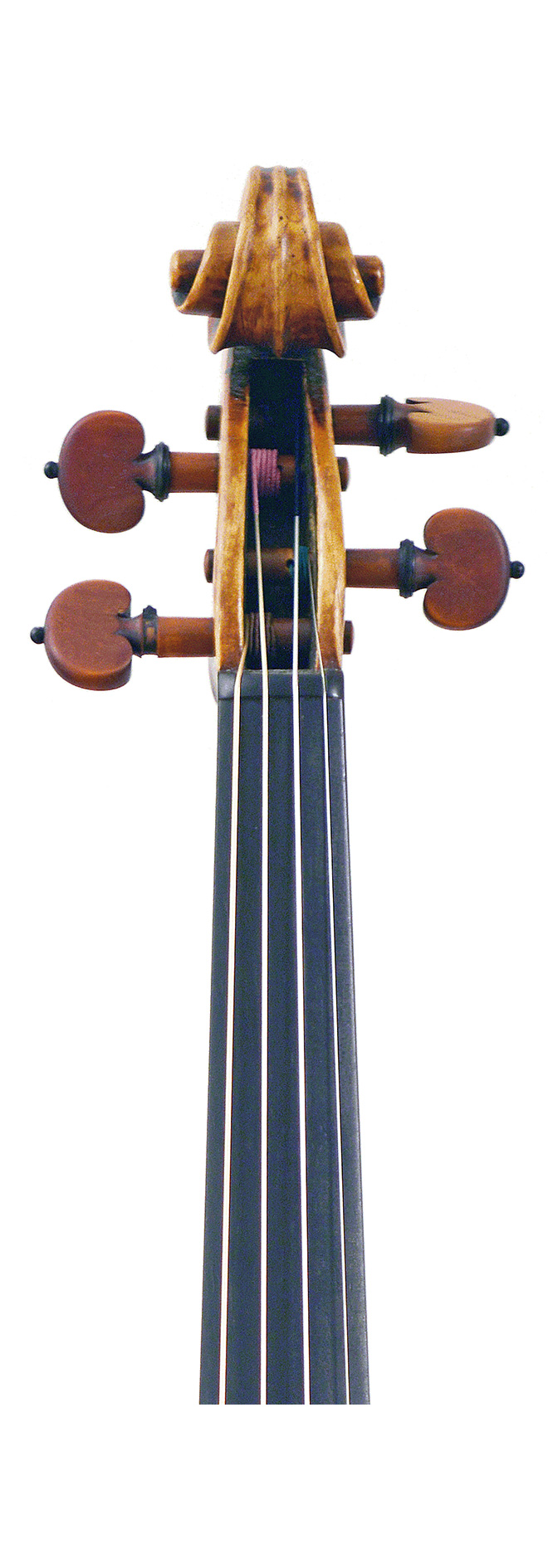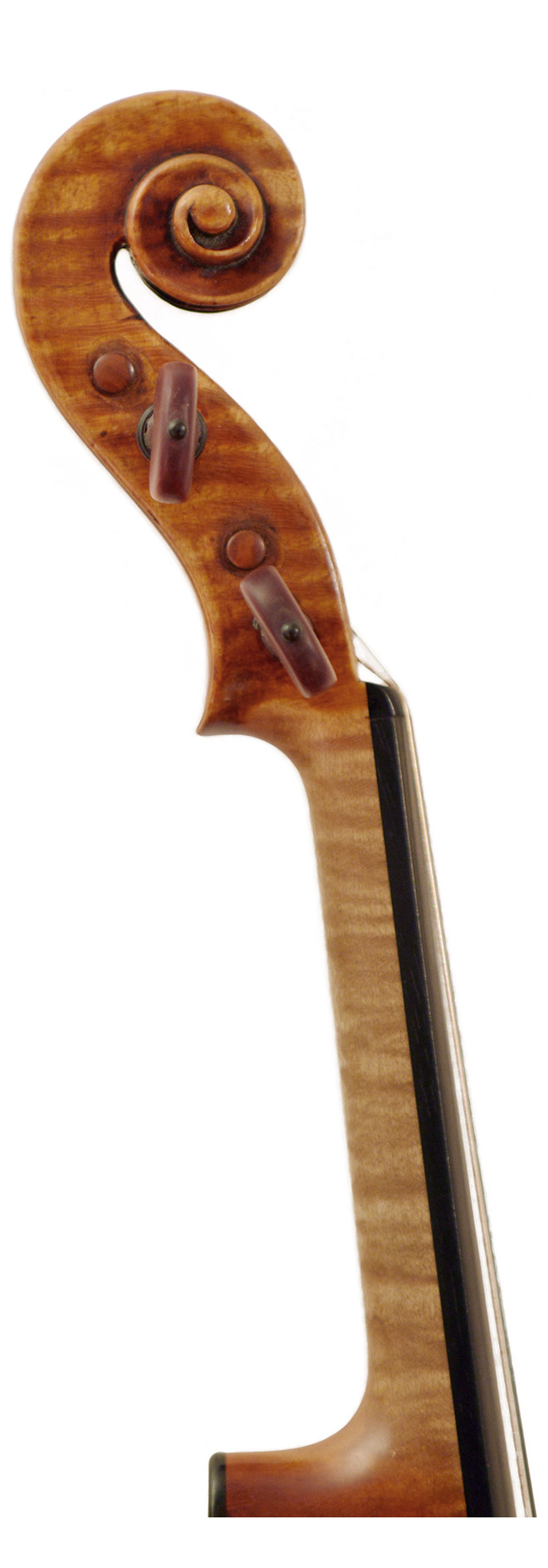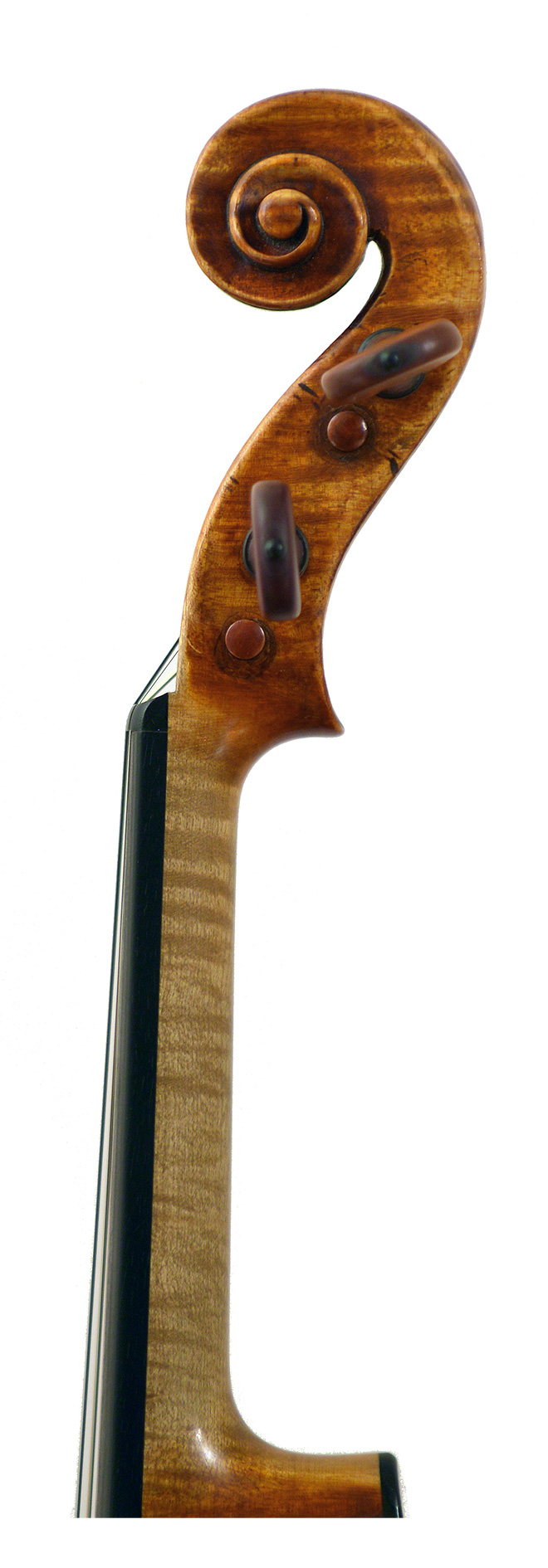Antonio Stradivari 1724 the “Abergavenny, ex-Kavakos”
This violin is named after Canon Capel from the town of Abergavenny, located in Monmouthshire, Wales. Abergavenny is a historic town known for its medieval castles and churches. Canon Capel is believed to have been an important religious figure associated with the town, and it is thought that he or his family were the original owners of this instrument.
The violin is crafted from a single piece of quarter-sawn maple, characterized by lively curls that slant diagonally from the f-holes towards the bass side. The ribs are also made of maple, featuring broader flames than those seen on the back, and the head is carved from a piece of maple that resembles the back. The top plate is made from two pieces of spruce with narrow, fine grain on the treble side that broadens towards the bass side. The Hills pointed out that the top and back plates exhibit different characteristics, suggesting they were made during different periods. However, they believed that all major parts were original and installed at the time of varnishing.
The violin also displays features characteristic of the beginning of Stradivari’s “Mature Period,” such as f-holes with more angular wings compared to earlier examples. The varnish on the instrument is of a reddish color over a golden ground.
The first known owner of this instrument was the renowned British violin maker, dealer, and collector John Betts, who sold the violin to Canon Capel’s father around 1800. It was later purchased by the Hill Brothers in 1896, and in August of the same year, they sold it to a London merchant named Alfred Way. After Way’s death, the violin was auctioned at Puttick & Simpson in London on May 22, 1901, where it was bought for £560 by amateur player Charles Morris. Morris later sold it to Emil Hamma of Stuttgart, and it eventually came into the possession of Robert A. Bower. In 1905, the “Abergavenny” was acquired by the German violin dealer August Herrmann, who later sold it to Willi Rosé. In 1922, the luthier Emil Herrmann acquired the instrument and, according to his records, sold it to Mrs. Mary Dows Herter-Norton for $9,000 in 1923. Mrs. Herter-Norton, a violinist and author of “The Art of String Quartet Playing: Technique and Interpretation,” played the “Abergavenny” until 1937. The violin then disappeared for nearly fifty years before it was rediscovered in the 1980s by the violinist Corrado Romano Siskoje of Trieste, Italy, who purchased it through the violin dealer Jacques Français. The violin later became famous as an instrument used by Leonidas Kavakos.









